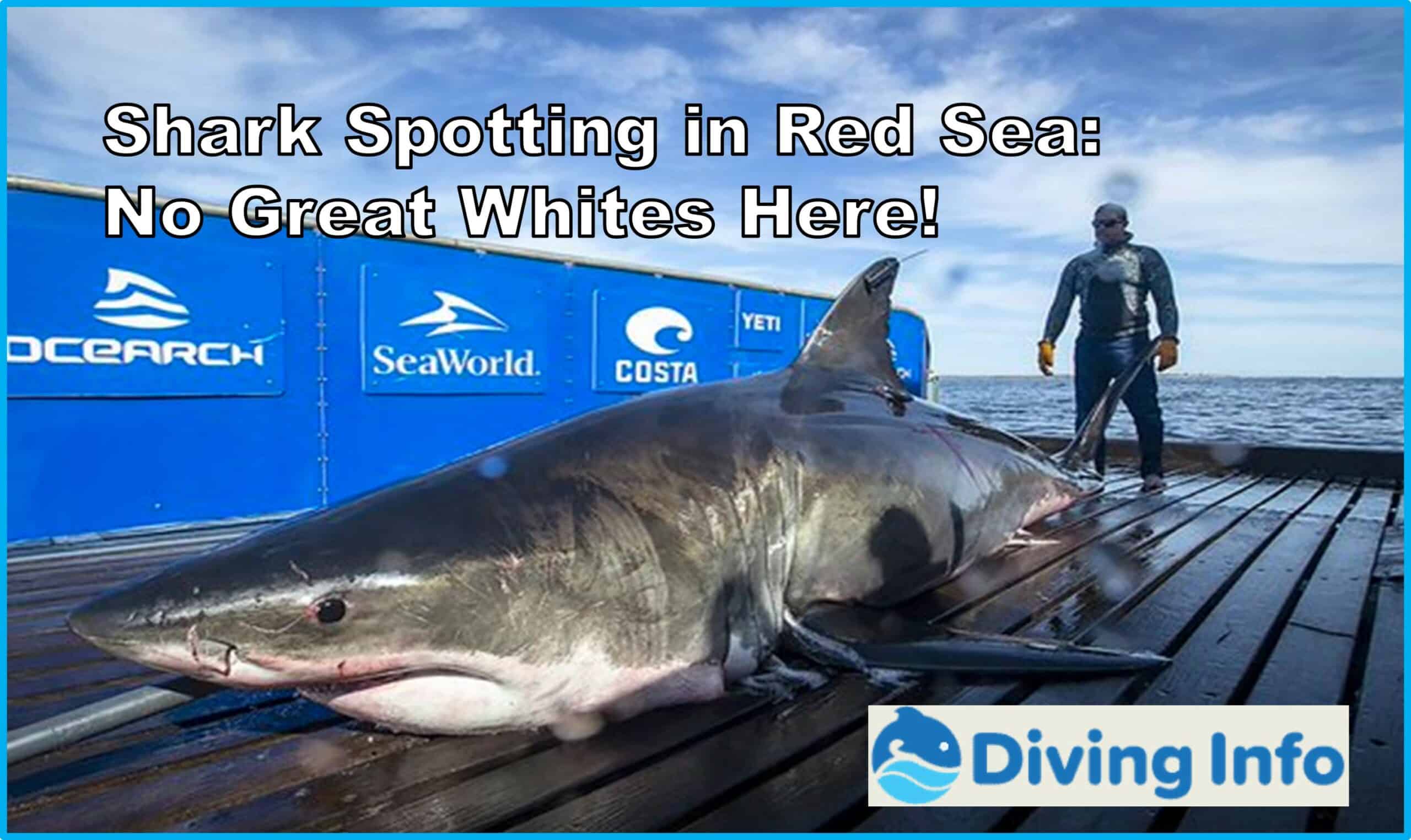*This post may contain affiliate links. As an Amazon Associate we earn from qualifying purchases.
Are you a scuba diving enthusiast looking to explore the depths of the Red Sea? If so, you may be wondering what types of sharks you might encounter.
While the Red Sea is home to a diverse array of sharks, one species that you won’t find here is the great white shark. Why is that, you ask? Well, it all comes down to temperature.
The warm waters of the Red Sea are simply too hot for great white sharks to survive. These apex predators are known for their ability to regulate their body temperature, but even they have their limits.
In this article, we’ll explore the science behind this temperature barrier and delve into the other shark species that call the Red Sea home. Plus, we’ll share some tips for the best diving practices to ensure that you have a safe and unforgettable experience exploring the underwater world of the Red Sea.
You may be interested in my other articles about Why do the great white sharks congregate around Neptune Island or Are there great white sharks in Sea of Cortez.
Shark Species in Red Sea
So, you’ve heard that there are sharks in the Red Sea, but you’re wondering if great white sharks are among them. Well, the truth is that due to the temperature barrier, great white sharks cannot survive in the Red Sea. Explore the fascinating world of deep-sea sharks.
However, there are still plenty of other shark species to be found. One of the most popular ones is the whale shark, which can be seen in the Red Sea year-round and often in groups of up to 20 individuals. Hammerhead sharks are also present, and their behavior is particularly fascinating. They tend to swim in schools during the day and disperse at night to hunt alone.
Despite the absence of great white sharks, the Red Sea remains a popular destination for shark enthusiasts. Many scuba diving liveaboards offer special shark-focused itineraries, where guests can have multiple whale shark sightings in a single trip. Hammerheads are also a common sight, and their schooling behavior makes for a thrilling underwater spectacle.
So, even without great white sharks, the Red Sea is still a must-visit destination for anyone interested in shark spotting.
Discover the top destinations for caged shark diving.
Temperature Barrier Explanation
You may wonder why certain shark species, such as the great white, cannot be found in the Red Sea. This is due to a temperature barrier that prevents great white sharks from thriving in the warm waters of the Red Sea.
Here are three facts to keep in mind:
- Great white sharks prefer cooler waters: These sharks can be found in cooler waters around the world, such as in South Africa, Australia, and California. The Red Sea’s average temperature of 21-30°C (69-86°F) is too warm for great white sharks to survive.
- Great white shark migration: During the winter months, great white sharks migrate to colder waters. This is why you can spot them in places like the southern Great Barrier Reef, but not in the Red Sea.
- Alternative shark diving destinations: While you won’t find great white sharks in the Red Sea, there are other shark species you can see. Hammerheads, grey reef, and whale sharks are just a few examples. If you’re still hoping to see great white sharks up close, you may want to consider diving at Guadalupe Island in Mexico or other locations where these sharks can be found.
Best Diving Practices
When exploring the Red Sea’s stunning marine life, it’s important to follow some essential tips and safety measures to maximize your diving experience.
First and foremost, always ensure that you have the appropriate diving certification and that your equipment’s in good working condition. Before diving, make sure to check the weather conditions and the water temperature to ensure that you’re adequately prepared.
It’s also essential to consider the depth of your dive and plan your ascent and descent carefully. When diving in the Red Sea, it’s crucial to practice responsible and sustainable diving techniques.
The marine life in the Red Sea is incredibly diverse and fragile, so it’s essential to avoid touching or disturbing any marine creatures and to always respect their natural habitat. Remember to avoid littering and to dispose of any waste correctly.
By following these tips and safety measures, you can ensure a safe and unforgettable diving experience in the Red Sea while preserving the natural beauty of this unique environment.


